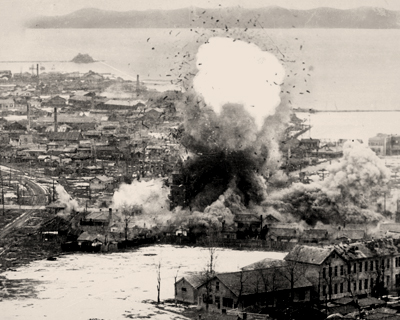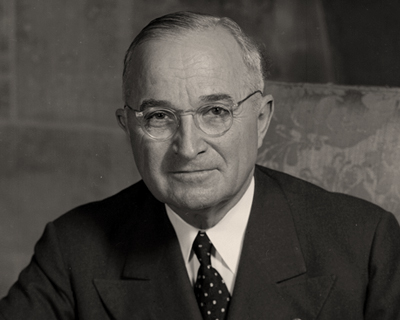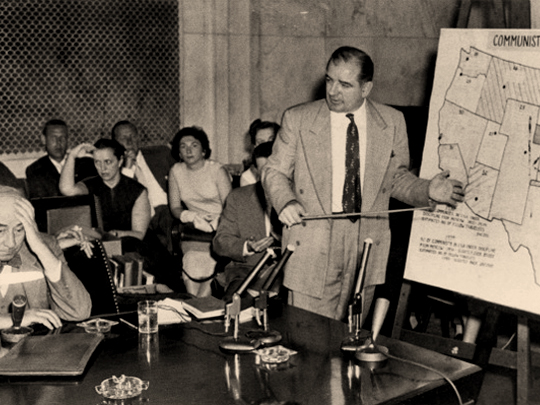U.S. Senate / Wikimedia Commons / CC-BY-SA-3.0 / GFDL
1 – Era of McCarthyism Begins
McCarthyism is the practice of making accusations of subversion or treason without proper regard for evidence.
The term has its origins in the period in the United States known as the Second Red Scare, lasting roughly from 1950 to 1956 and characterized by heightened political repression against supposed communists.
The McCarthy Era also involved a campaign of spreading fear of their influence on American institutions and of espionage by Soviet agents.
Originally coined to criticize the anti-communist pursuits of Republican U.S. Senator Joseph McCarthy of Wisconsin, “McCarthyism” soon took on a broader meaning, describing the excesses of similar efforts.
The term is also now used more generally to describe reckless, unsubstantiated accusations, as well as demagogic attacks on the character or patriotism of political adversaries.
During the era, thousands of Americans were accused of being communists or communist sympathizers and became the subject of investigations, being questioned before government or private-industry committees.
The primary targets of such suspicions were government employees, those in the entertainment industry, educators and union activists.
Many people suffered a loss of employment or destruction of their careers, and some even suffered imprisonment.
Most of these punishments came about through trial verdicts later overturned.
2 – Korean War Begins

The Korean War (25 June 1950 – 27 July 1953) began when North Korea invaded South Korea. The United Nations, with the United States as the principal force, came to the aid of South Korea.
China, with assistance from the Soviet Union, came to the aid of North Korea. The war arose from the division of Korea at the end of World War II and from the tensions of the Cold War that had developed.
Korea was ruled by Japan from 1910 until the closing days of World War II.
In August 1945, the Soviet Union declared war on Japan, as a result of an agreement with the United States, and liberated Korea north of the 38th parallel. U.S. forces subsequently moved into the south.
By 1948, as a product of the Cold War between the Soviet Union and the United States, Korea was split into two regions, with separate governments.
The civil war escalated into open warfare when North Korean forces, supported by the Soviet Union and China, moved south to unite the country on 25 June 1950.
On that day, the United Nations Security Council recognized this as an act of invasion and called for an immediate ceasefire. Twenty-one countries of the United Nations eventually contributed to the defense of South Korea.
The fighting ended on 27 July 1953, when an armistice was signed. The agreement created the Korean Demilitarized Zone to separate North and South Korea and allowed the return of prisoners.
However, no peace treaty has been signed, and the two Koreas are technically still at war.
3 – An Assassination attempt on President Truman

The second of two assassination attempts on US President Harry S. Truman occurred on November 1, 1950.
It was carried out by Puerto Rican pro-independence activists Oscar Collazo and Griselio Torresola, while the president resided at Blair House during the renovation of the White House.
Both men were stopped before gaining entry to the house. Torresola mortally wounded White House Police officer Leslie Coffelt, who killed him in return fire.
Secret Service agents wounded Collazo.
President Truman was upstairs in the house and was not harmed.
